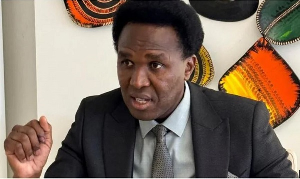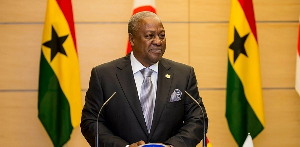AngloGold Ashanti generated free cash flows of $88m in the third-quarter of this year, following strong production and cost containment across its portfolio, as it remained on track to meet its full-year guidance.
Third-quarter all-in sustaining costs (AISC) were unchanged from the same period a year ago at $1,071/oz, despite inflationary pressure, planned higher capital reinvestment expenditures and stronger currencies. Production of 997,000oz during the quarter was 11% higher than the same period a year earlier, and was 9% higher than the previous quarter this year.
“Our strong production performance resulted in good free cash flow generation, despite our planned reinvestment programme and a flat gold price,” Chief Executive Officer Srinivasan Venkatakrishnan said. “We expect a strong finish to the year at our key international operations and continued delivery to tight timelines and budgets on our portfolio improvement projects.”
AngloGold remains on track to meet full-year guidance and to deliver on its restructuring objectives in South Africa, where it has taken steps to stem unsustainable losses at some of its operations. The Company has announced the sale of some South African assets and has earmarked the proceeds for debt reduction. It will also place loss-making South African operations on care and maintenance, and is investing in a slate of high return and low capital brownfields projects in its International Portfolio to extend mine lives and improve margins. These projects remain on schedule and on budget.
The Company announced last month the $300m sale of its Moab Khotsong mine and related assets to Harmony Gold Mining Co. and also the sale of its Kopanang Mine and West Gold Plant to Heaven?Sent SA Sunshine Investment Company Limited, which controls the local Village Main Reef operation, for R100m, with the proceeds to be applied to reduce debt. The sales remain subject to certain conditions precedent. Once these sales are complete, and the loss-making TauTona mine is placed on care and maintenance, an estimated 13% of the Company’s total production will come from its remaining operations in South Africa.
Production
The South African operations delivered a 10% production volume improvement from the previous quarter, and a 32% uplift when compared with the first quarter of the year. The International Operations delivered another strong performance with an 11% increase in production compared with the third quarter of 2016, driven by stronger contributions from both mines in Australia, AGA Mineração in Brazil and Siguiri and Geita in Continental Africa.
Safety
The All-Injury Frequency Rate (AIFR) of the group, the broadest measure of workplace safety, for the quarter ended September 2017 was 6.98 per million hours worked, a 6% improvement from 7.42 in the second quarter of the year. Sadiola, Yatela, Siguiri, Iduapriem, Obuasi, La Colosa, Gramalote, Quebradona and Greenfields Exploration achieved an injury-free quarter.
During the quarter, all the South African operations had passed one million fatality-free shifts. The International Operations recorded 375 days without a fatal accident, as at the end of the quarter.
“Safety is, and always will be, our first priority. We have made strides to improve safety in recent years – and in particular the past 15 months – but the fatal accidents since the end of the quarter at our South African Operations, have demonstrated again that victory can never be declared in this regard. We will be focusing closely on our safe production strategy and also intensifying our search for continuous improvement,” Venkatakrishnan said.
Cash Flow and Balance Sheet
The balance sheet remains robust with strong liquidity and long-dated maturities providing significant financial flexibility. Adjusted earnings before interest, tax, depreciation and amortisation (EBITDA) was $399m for the quarter, up from $395m in the third quarter of 2016, and 35% more than the $296m recorded in the second quarter of 2017. Net debt as at the end of the quarter was $2.063bn, up from $1.972bn at the end of the third quarter of 2016 but lower than the $2.151bn posted at the end of the second quarter of 2017.
Total sustaining capital expenditure, as a result of planned reinvestments, increased by 18% to $219m for the quarter, compared to $186m for the third quarter of 2016. Sustaining capital expenditure for the International Operations increased by 34% to $186m, compared to $140m for the third quarter of 2016. Sustaining capital projects include a new power plant and underground development at Geita, increased underground development at Kibali as the new underground mine ramps up, capitalised stripping at Iduapriem at the cut-back of the Teberebie pit, and the recovery improvement initiatives at Sunrise Dam. It is anticipated that the sustaining capital expenditure will peak in the last quarter of the year, in line with the plans.
The outlook for the full year remains unchanged with production of between 3.6Moz to 3.75Moz, at an AISC between $1,050/oz and $1,100/oz and capital expenditure between $950m and $1,050m
Click to view details



Business News of Wednesday, 22 November 2017
Source: classfmonline.com
AngloGold cash flow jumps to $88m
Entertainment
















